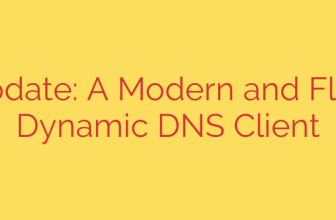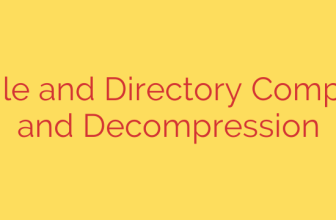
Leading with Integrity: A Guide to Harnessing AI Responsibly
Artificial intelligence is no longer a futuristic concept—it’s a present-day reality reshaping industries and redefining the very nature of leadership. From automating routine tasks to providing deep analytical insights, AI offers unprecedented opportunities for growth and innovation. However, with this great power comes an equally great responsibility. For leaders, integrating AI is not just a technological challenge; it is, first and foremost, an ethical one.
Navigating this new terrain requires a proactive approach centered on integrity, transparency, and a deep commitment to human values. The choices made today will determine whether AI becomes a tool for equitable progress or a source of unintended harm.
The Double-Edged Sword: AI’s Promise and Peril
On one hand, AI empowers leaders to make smarter, faster, and more data-backed decisions. It can analyze market trends, optimize supply chains, and even help identify burnout risks within a team. By handling repetitive administrative work, AI frees up valuable time for leaders to focus on strategic thinking, mentorship, and building a stronger company culture.
On the other hand, the risks are significant and cannot be ignored. AI systems learn from the data they are given, and if that data reflects existing societal biases, the technology will only amplify them. This raises critical questions that every leader must confront.
Core Ethical Challenges Leaders Must Confront
Successfully implementing AI requires a clear-eyed understanding of the potential ethical pitfalls. Ignoring these challenges is not an option for any organization that values its reputation, its employees, and its customers.
1. The Hidden Danger of Algorithmic Bias
One of the most pressing concerns with AI is its potential to perpetuate and even worsen discrimination. If an AI tool used for hiring is trained on historical data from a company with a poor track record of diversity, it may learn to unfairly penalize candidates from underrepresented groups. Leaders are ultimately responsible for ensuring that AI systems used in their organization are fair, equitable, and regularly audited for bias. This applies to everything from recruitment and promotions to performance reviews and task allocation.
2. Navigating Employee Privacy and Data Security
AI-powered tools can monitor employee productivity, analyze communications, and track engagement. While this can provide useful insights, it also opens the door to invasive surveillance and serious privacy violations. A clear line must be drawn between legitimate performance monitoring and intrusive overreach. Establishing a transparent data policy that clearly communicates what data is being collected, why it’s being collected, and how it will be used is non-negotiable for building trust.
3. The Accountability Dilemma: Who’s Responsible?
When an autonomous system makes a critical error—for example, a flawed financial projection that leads to major losses or a biased hiring decision—who is accountable? Is it the software developer, the company that deployed the AI, or the manager who acted on its recommendation? Leaders must establish clear lines of accountability for AI-driven outcomes and never delegate final responsibility to a machine. The “AI made me do it” defense is not a viable strategy.
4. Demystifying the AI “Black Box”
Many advanced AI models are incredibly complex, making it difficult to understand exactly how they arrive at a particular conclusion. This “black box” problem poses a significant challenge for transparency. If you can’t explain why an AI made a certain decision, you can’t fully trust it or defend it. Leaders should prioritize AI solutions that offer interpretability and demand that vendors provide clear explanations of how their algorithms work.
A Practical Framework for Ethical AI Leadership
Embracing AI responsibly requires more than just good intentions; it demands a concrete action plan. Here is a blueprint for integrating AI ethically and effectively.
Establish a Clear Governance Policy. Before deploying any major AI initiative, create a formal AI ethics framework. This document should outline your organization’s principles on fairness, accountability, and transparency, serving as a guide for all AI-related projects.
Champion Radical Transparency. Be open with your employees, customers, and stakeholders about your use of AI. Communicate which processes are AI-assisted and provide channels for feedback and appeals, especially when AI influences decisions that impact people’s careers and well-being.
Keep a Human in the Loop. For high-stakes decisions—such as hiring, firing, and medical diagnoses—AI should serve as a supportive tool, not the final decision-maker. Ensure that human oversight is a mandatory part of any critical workflow to provide context, apply judgment, and catch potential errors or biases that the machine might miss.
Invest in Unbiased Data and Regular Audits. The quality of your AI is directly tied to the quality of your data. Invest in cleaning and diversifying your datasets to mitigate bias from the start. Furthermore, schedule regular audits of your AI systems to test for fairness and accuracy, treating it like any other critical business compliance process.
Commit to Continuous Learning and Reskilling. Address fears of job displacement head-on by investing in your workforce. Provide training and reskilling opportunities to help employees adapt to an AI-augmented workplace. Frame AI not as a replacement for people, but as a tool to enhance their capabilities and create new, more valuable roles.
The integration of artificial intelligence into leadership is inevitable. The true test will be not in if we use this technology, but in how we use it. By prioritizing ethical considerations and placing human values at the center of their strategy, leaders can harness the transformative power of AI to build smarter, more efficient, and fundamentally more humane organizations.
Source: https://www.simplilearn.com/ai-in-leadership-article








